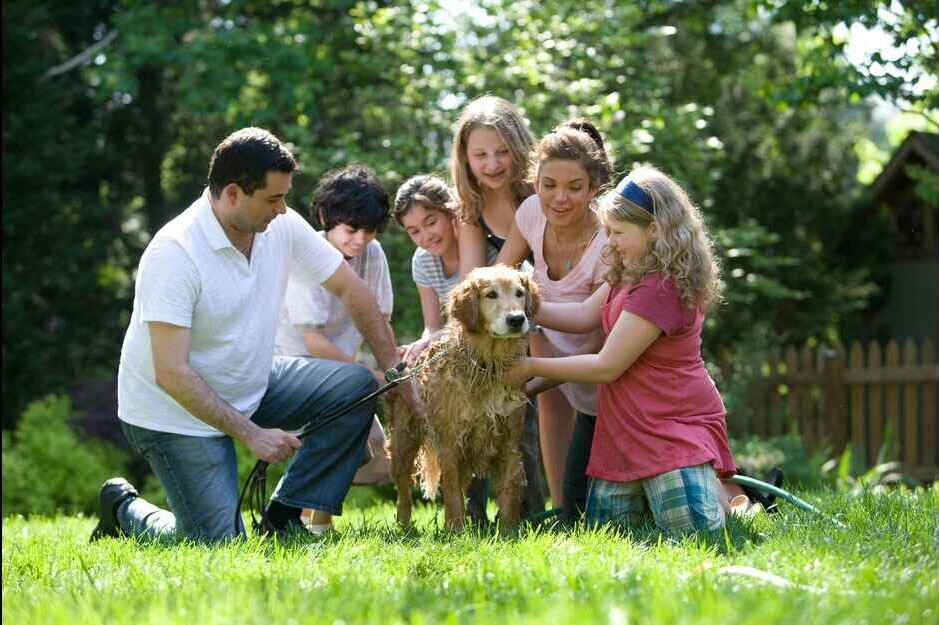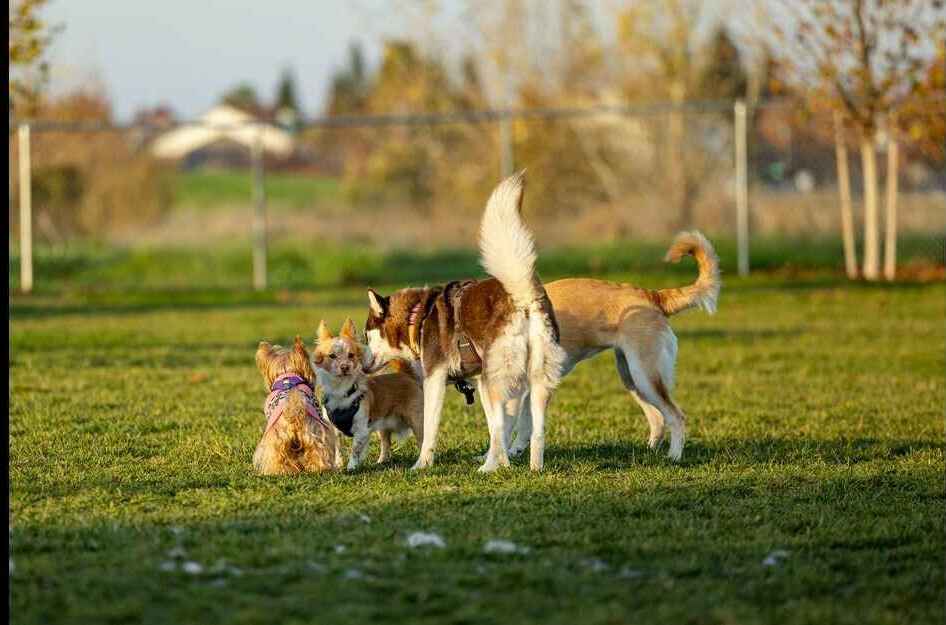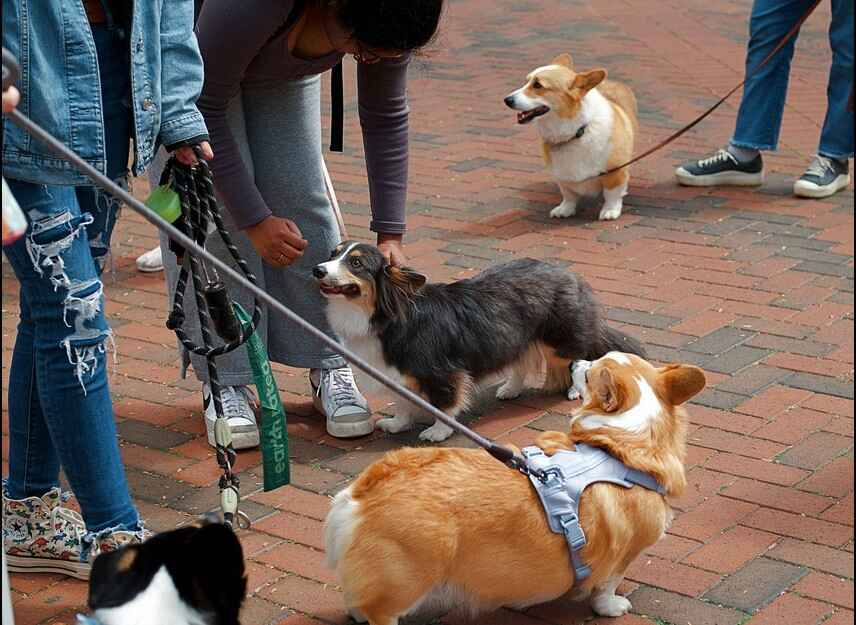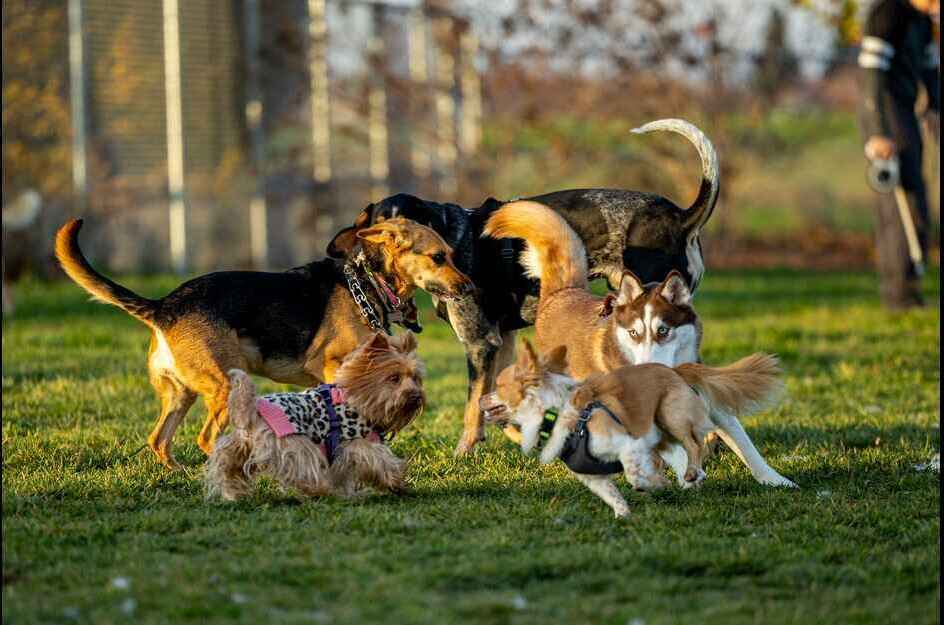Socializing Your Dog with Other Dogs and People
Why Socializing Your Dog Matters
Socializing your dog with other dogs and people builds trust.It teaches your dog how to behave around both known and unknown people,react quietly and maintain focusYour dog could grow protective or anxious if they do not have this exposure.
Think of a dog that growls every time it sees another dog at the park.It did not start that way.It likely missed a chance to learn how to connect with other pets early on.This lack of exposure can turn daily walks into stressful moments for both of you.
Behavior improves drastically when you focus on socializing your dog with other dogs. Friendly greetings replace barking.Confidence grows with every new meeting.You’re not only preventing issues like fear or reactivity but building habits that last a lifetime.
Start slow.Go at your dog’s pace.This isn’t about forcing interaction—it’s about giving them a chance to experience the world with you by their side.
According to the American Kennel Club,socializing your dog early can prevent fear-based behaviors and long-term aggression.
What Socialization Really Means
You may hear the term often,but what does socialization mean?Simply,it’s the process of teaching dogs to be comfortable around others—dogs,humans and new environments.
For puppies,it starts early.The first 3–14 weeks of life are a golden window.This is when they absorb sights,smells,sounds.It’s the time to begin socializing your puppy with other dogs,letting them explore interactions in safe,controlled ways.
If your dog is older or a rescue,don’t worry.It’s never too late.Socializing a rescue dog with other dogs just needs a bit more patience.You can still help them learn trust—even if they missed early exposure.
Dogs are social by nature.Still,the environment shapes behavior.Is it important for dogs to socialize with other dogs?Absolutely,But how depends on timing,history and your involvement.
Consistency is key.A single walk is not enough.Repetition builds confidence.The more they encounter friendly faces both human and canine,the more natural it becomes.

Meeting Other Dogs: What You Should Know
Not all dogs hit it off instantly.When socializing your dog with other dogs,you need to pay close attention to the signals.Look for wagging tails,soft eyes,relaxed posture.Those are green lights.
But stiff bodies,tucked tails,raised hackles?Those are warnings.Your dog might be overwhelmed.It’s time to create distance and try again later.Never force interaction.
Always choose a neutral spot for the first meeting.A park,not your backyard.Keep both dogs on loose leashes.Allow them to circle,sniff and move away freely.Avoid tight grips—that tension travels down the leash and into your dog.
When you’re socializing a rescue dog with other dogs,short sessions work better.Keep greetings brief.Give space.End on a good note,even if the dogs don’t play.Every calm encounter is progress.
Supervise all play.Dogs have different play styles.Some love chase,others wrestle.Interrupt if it gets too intense.Redirection isn’t punishment—it’s guidance.
Before socializing,teaching your dog some basic obedience commands can help manage their behavior better during interactions
So,do dogs need to socialize with other dogs?Yes.But they also need breaks,understanding and support from you.
How to Introduce Your Dog to People
People bring their own challenges.Hats,sunglasses,wheelchairs—all can seem strange to a dog.So when you’re socializing dogs with humans,variety matters.
Start by inviting calm visitors over.Ask them not to rush your dog.Let your dog approach at their own pace.Some might sniff and walk away.Others will lean in for pets.Respect both.
Use treats to create positive links.Stranger equals good things.That’s how you shift fear into curiosity.
Encourage children to be still.Loud voices and fast movements can scare sensitive dogs.Supervise all interactions.
If your dog barks or hides,don’t scold them.That teaches fear.Instead,back up and try a less intense approach later.Progress isn’t about perfection.It’s about trust.
Over time,your dog learns that people aren’t threats.They’re part of the world—and that world is okay.
Tough Spots and What to Do
Socialization doesn’t always go smoothly.You may face hurdles—growling,lunging,frozen fear.It happens,especially with rescues or dogs with limited past exposure.
When aggression shows up,step back.Don’t label your dog as“bad.”They’re scared or unsure.That’s where structured guidance helps.
You might ask,when can dogs socialize with other dogs?There’s no one answer.Some pups dive in at 10 weeks.Others need months.Let your dog set the pace.Rushing leads to setbacks.
Anxiety often masks as aggression.Barking at another dog might be your dog saying,“I don’t feel safe.”Avoid triggers.Work below the fear level.Build up slowly.
If nothing works,ask for help.Trainers who specialize in behavior can turn stress into success.There’s no shame in needing support.You’re doing right by your dog.
PetMD’s dog socialization tips recommend keeping introductions short and rewarding calm behavior to build trust step by step.
Keeping the Momentum Going
Once your dog is making progress,do not stop there.Socialization is not a one time project.It a lifelong skill that needs regular practice to stick.
Daily walks in different areas help.One day at the park,another around the block.Each route brings new people,smells and dogs each a fresh opportunity for learning.
Invite friends over often.Mix up the faces.Mix up the settings.A dog that greets people calmly at home might act differently at a café or vet’s office.
Doggy daycare can help too—but only if your dog is ready.Not every dog enjoys a crowd. Small supervised playgroups work better for shy types.Watch how your dog reacts.Pull back if they seem overwhelmed.
Socializing your dog with other dogs doesn’t mean they need dozens of canine friends. Even just a few positive relationships are enough to keep them balanced and secure.
And don’t forget people.Let your dog meet folks of different ages,ethnicities and energy levels.Each adds a layer of comfort and confidence.
If your schedule is tight,short five-minute sessions can be just as effective as long ones.The goal is repetition and calm experiences—not chaos.
You might wonder,is it important for dogs to socialize with other dogs regularly?Yes.But it’s more important they feel safe and supported while doing it.One good encounter beats five stressful ones.

Real-World Activities to Reinforce Social Skills
Dogs learn best through doing.Once the basics are in place,real-life activities keep the learning alive.It’s where socializing dogs with humans and other pets turns into something fun and sustainable.
Here are practical ways to keep things on track:
- Walks during busy hours:Early exposure to strollers,joggers,bikes.
- Pet-friendly cafes:Teaches calmness around noise and movement.
- Group obedience classes:Controlled social settings with guidance.
- Playdates with trusted dogs:Keeps canine communication sharp.
- Errands with car rides:Prepares them for new environments.
Even games like fetch in the park can boost confidence.Just remember,socializing your dog with other dogs doesn’t mean full-on play every time.Sometimes,being around other dogs calmly is enough.
Use a mix of leash time,off-leash space (if safe), and rest.Every outing builds your dog’s world.Every successful moment stacks up,making future social experiences smoother.
And yes,your energy matters.Stay relaxed.Your dog reads your mood.Confidence from you means confidence from them.
Make it a routine.Social dogs are made,not born.Daily habits shape lifelong behavior.
Overcoming Setbacks and Building Confidence Again
Setbacks are part of the process.Not every day will go smoothly when socializing your dog with other dogs.Maybe your pup barked too much at the park or maybe a friendly visit turned tense.That’s okay.
The key is to avoid pushing too hard. If your dog had a bad interaction,take a break.Return to basics.Use quiet environments.Limit the number of people or dogs around.Work back up to bigger challenges.
For socializing a rescue dog with other dogs,setbacks might come often.Rescues may have trauma,mistrust or missed early learning.Instead of rushing to fix it,focus on one goal—building trust.
Always reward calm behavior.If your dog walks past another dog without barking praise them.If they sniff a stranger’s hand without retreating offer a treat.These little moments are big wins.
Ask yourself:Is my dog overwhelmed?Am I asking too much?Sometimes just sitting in a park,observing other dogs from a distance,is enough for progress.
And if regression continues,a professional trainer helps.Especially someone skilled in dog behavior.They’ll see what you might miss and guide you step by step.
Keep in mind,do dogs need to socialize with other dogs?Yes—but not at the cost of their emotional safety.Recovery is possible with the right approach.
Patience wins over pressure.Calm repetition beats chaos.One day,those past struggles will become part of a success story.
Why Consistency Matters Most
Socialization is not a one off task,it is a daily habit.Think of it like brushing your teeth.A little every day prevents big problems later.
Dogs like people forget.If you stop exposing your dog to different dogs or people,they might lose confidence.That is why maintaining social skills through routine exposure is so important.
What can that look like?
- A weekend walk through the farmers’ market.
- Weekly visits to a friend’s house with a calm dog.
- Saying hi to new neighbors during evening walks.
- Letting your dog explore a new park or trail once a month.
Each situation adds to their learning.They get better at reading cues,trusting humans and staying calm.
If you’re socializing your puppy with other dogs,use this time wisely.Those early experiences shape future reactions.Positive exposure now means fewer issues later.
Make it part of your routine.Five minutes in the morning.Ten minutes during your walk.Keep the sessions light,positive and stress-free.
Be flexible.If your dog isn’t in the mood,don’t push.But don’t let long gaps happen either. Even short greetings or a wave from a neighbor can reinforce the right feelings.
Stay consistent and social skills will become second nature for your dog.

Bringing It All Together
Socializing your dog with other dogs and people isn’t just a task—it’s a lifestyle.Done well,it shapes a dog’s confidence,behavior and happiness.It makes your walks easier,your home calmer and your bond stronger.
Whether you’re working with a puppy or socializing a rescue dog with other dogs,the foundation is trust.Build slowly.Celebrate small wins.Watch body language.Keep it regular.
Do dogs need to socialize with other dogs?Yes,but quality always beats quantity.Safe,positive exposure matters more than how many dogs your pet meets.
So start now.Start small.And stick with it.You’ll both grow together—one paw at a time.
As VCA Hospitals explain, socializing puppies before 16 weeks helps avoid long-term fear and anxiety in adult dogs
FAQs
1.How do I know if my dog is ready to meet other dogs?
If your dog can stay calm on a leash around other dogs and shows curiosity rather than fear or aggression they are likely ready.Watch body language closely.
2.What’s the best age to start socializing a puppy?
Start as early as 3 weeks and ideally before 14 weeks.This is the most receptive period for puppies to learn about new experiences.
3.Can I socialize an adult rescue dog?
Yes With patience and structure adult dogs can still learn to enjoy the company of others.Go slowly and celebrate every small success.
4.How often should my dog meet other dogs?
Consistency is key.Aim for a few times a week even if it is brief.Quality safe interactions are more valuable than frequent stressful ones.
5. What should I do if my dog shows aggression during socialization?
Stop the session calmly,create space and try a more controlled setting next time.Consider working with a behavior expert for guidance.
